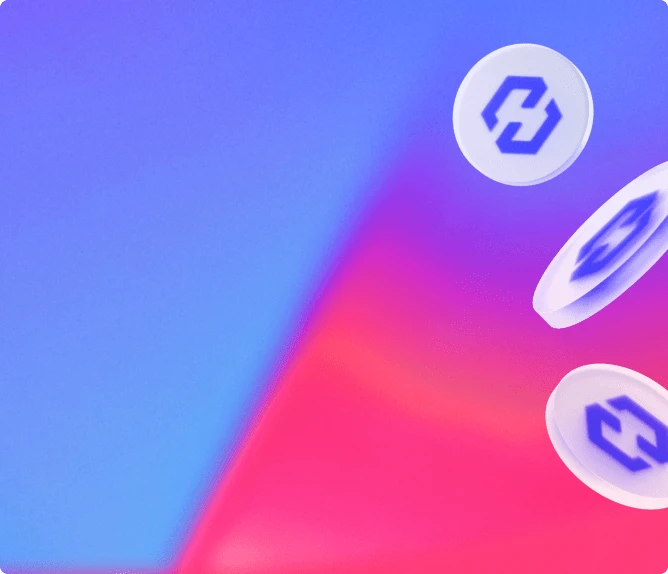Investing in crypto-assets carries risks of liquidity, volatility, and partial or total capital loss. Crypto-assets held are not covered by deposit and securities guarantee mechanisms.


Sign up for our newsletter
Partners
Coinhouse
Our accounts
Coinhouse
Coinhouse SAS with a capital of €210,000, RCS Paris 815 254 545, headquarters: 14 Avenue de l'Opéra 75001 Paris – support@coinhouse.com. Registered with the AMF for activities related to the purchase/sale of digital assets against legal tender, the exchange of digital assets for other digital assets, and the custody of digital assets for third parties under the registration number: E2020-001.
Coinhouse payment solutions
Company registered with the Paris RCS under the number 914 384 557, registered with the Prudential Control and Resolution Authority as a payment service agent under the number 727503 of the electronic money institution Treezor, headquartered at 33 Avenue de Wagram, 75017 Paris.
General conditions, disclaimers and legal documents.


5 April 2024

Open an account
Over the years, staking has become a popular tool for crypto investors.
The ability to generate rewards attracts many, but can still present a complexity that discourages some.
Indeed, deploying a validator yourself, and managing its maintenance, presents a number of constraints, such as the technological barrier, financial costs, ongoing hardware maintenance and updates.
Specialized players therefore offer investors staking solutions without all these restrictive layers.
A multitude of staking product offers exist today, and it can be difficult to understand which one best suits your needs.
The first thing to do is to compare the reward rate (or APR/APY for Annual Percentage Rate/Yield) of each offer to determine the most interesting product.
However, it should be noted that the actual rate of income generated by a blockchain can vary over time, and that the rates paid out are not calculated in the same way.
The rewards received by the investor may turn out to be radically different from those advertised.
Let’s take a look at the different methods of calculating reward rates, so you can really know what you’ll receive.
NB: The figures used in the rest of this article are for illustrative purposes only.
First calculation method: Deduct commissions from rewards
This method is currently the most widely used by providers of staking services.
It consists of passing on the rewards to the investor, deducting a portion of the latter, which represents the provider’s commission. The RPA indicated is for guidance only. and in no way commits the latter to paying out a given level of rewards to the investor.
The advertised rate is then often deducted from the rate that the blockchain has served over a given period (30 days, 6 months, 1 year, etc.).
Real blockchain rate: 9.7%.Commissions: 35Estimated advertised rate: 9.5% APR Assuming that the supplier operates its validator correctly and receives the actual rate, the rate received by the investor would ultimately be 9.7*%*(1-35%) ≈ 6,31%
This method of calculation can have a very significant impact on the investor’s staking remuneration, depending on the commissions received by the provider.
This information should therefore be checked to estimate the rate that will actually be paid to the investor when subscribing to the staking product.
Second calculation method: Deduct management fees from the portfolio
With this method, the investor receives 100% of the rewards generated by his crypto-assets.
However, in return, they must pay fees calculated on the total funds he has placed in staking.
And as with the first method, the indicated rate does not include these fees.
Effective blockchain rate: 9.7Management fee: 3%.Estimated advertised rate: 9.5% APR Assuming once again that the provider operates correctly and receives the actual blockchain rate, the actual rate for the investor would be 9.7% – 3% = 6,7%
This method can be extremely penalizing for investors in crypto-assets with low staking rates.
A network that pays 3.5% will only give 0.5% once fees have been deducted, depriving the investor of a large part of the rewards of staking his cryptos.
Third method: A guaranteed rate Unlike the previous two methods, this one does not display an indicative rate, but rather the rate actually received by the investor when he invests in the staking product.
It offers one undeniable advantage: transparency.
Investors know exactly what rate they’re going to receive, without having to do any calculations of their own, and without having to find information that’s hard to access on the supplier’s website.
Example: Actual blockchain rate: 9.7Guaranteed rate: 9%. No calculation required, the rate paid to the investor is the guaranteed rate, i.e. 9% For the sake of simplicity and support, Coinhouse uses the latter method for its Staking product.
Share the article

